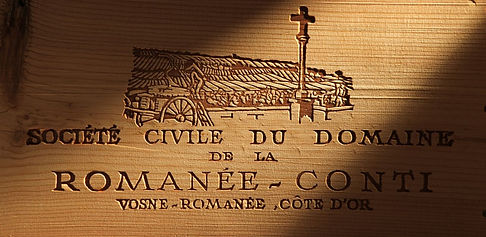

S
A B C D E F G H I J K L M N O P Q R S T U V W X Y Z
SAIN-SAIN
SAAL-SAIN SAIN-SAIN SAIN-SASS SASS-SAVO SAXU-SCRE SCRE-SICI SIGN-SONO SONO-STAG STAG-SUPE
Only 4,5 and 5,0 NJP wines (Nenad Jelisic Points) are presented as the best vintages.
If for some wine behind “the best vintages” stands “none”, it means that none of the wine's vintages got 4,5 NJP or 5,0 NJP.
Saint Émilion Premier Grand Cru Classé A according to the 1996 Classification, to this quality class belongs two chateaux: Château Ausone and Château Cheval Blanc. (2012-05)
Saint Émilion Premier Grand Cru Classé A according to the 2012 Classification, to this quality class belongs four chateaux: Château Angélus, Château Ausone, Château Cheval Blanc and Château Pavie. (2012-10)
Saint Émilion Premier Grand Cru Classé B according to the 1996 Classification, to this quality class belongs eleven chateaux: Château Angélus, Château Beauséjour, Château Beau-Séjour Bécot, Château Belair-Monange, Château Canon, Château Figeac, Château La Gaffelière, Château Magdelaine, Château Pavie, Château Trotte Vieille and Clos Fourtet. (2012-05)
Saint Émilion Premier Grand Cru Classé B according to the 2012 Classification, to this quality class belongs fourteen chateaux: Château Beauséjour, Château Beau-Séjour Bécot, Château Belair-Monange, Château Canon, Château Canon-la-Gaffelière, Château Figeac, Château La Gaffelière, Château Larcis Ducasse, Château Pavie-Macquin, Château Troplong Mondot, Château Trotte Vieille, Château Valandraud, Clos Fourtet and La Mondotte. (2012-10)
Saint Estèphe, a French appellation that belongs to the wine district of Médoc, which in turn belongs to the wine region of Bordeaux. Of the 61 classified chateaux (see 1855 Classification) belong 5 to the appellation. Of those 5, 2 are classified as Deuxièmes Crus (Château Cos d'Estournel and Château Montrose), 1 as Troisièmes Crus (Château Calon-Ségur), 1 as Quatrièmes Crus (Château Lafon-Rochet) and 1 as Cinquièmes Crus (Château Cos Labory). The appellation has 1,255 ha. The average yield is 44 hl/ha. Saint Estèphe’s wines are considered to be the most tannin-rich and to have the slowest development in Haut-Médoc. The best vineyards in the appellation are on gravel. Regardless of what was written before, during the very dry and hot years, the vineyards planted on clay give much better vintages than those planted on gravel. This is because the dense clay keeps water longer in its pores during the dry and hot years than the high porous gravel. (2012-10)
Saint Estèphe grapes, most Cabernet Sauvignon (51%) and Merlot, but there are small amounts of Cabernet Franc and Petit Verdot. (2012-05)
Saint Estèphe soils, sandy gravel on top of hardpan and in some cases on top of clay or rocky clay or marl or limestone. The hardpan lies quite deep, which is good taking into account that it is so hard that the roots can not penetrate it. (2014-08)
Saint Estèphe the best chateaux, Château Cos d'Estournel and Château Montrose. (2012-05)
Saint Estèphe the best vintages, 1945, 1949, 1953, 1959, 1961, 1970, 1982, 1985, 1986, 1990, 1996, 2000, 2003, 2005, 2009, 2010 and 2015. (2018-11)
Saint Joseph, a French appellation the belongs to the wine district of Northern Rhône, which in turn belongs to the wine region of Rhône. The appellation has 1,215 ha. The climate is continental. The average yield is 33 hl/ha. In this appellation, 10% of white wines made by Marsanne and Roussanne may be blended into red wines made to 100% by Syrah. Syrah is the only red wine grape that may be used in this appellation. The majority of Saint Joseph-red wines should be drank young, around 2 to 6 years old. However, there are special cuvées from older vines and specific places that can be aged up to 12 years. For white wines made by Marsanne with a small percentage of Roussanne also applies that they should be drank young, but this time around 2 to 3 years old. The best of Saint Joseph white and red wines can be aged up to 12 years. (2016-05)
Saint Joseph grapes, Syrah (accounts for 91% of cultivated grapes) for red wines, and Marsanne and Roussanne for white wines. (2016-05)
Saint Joseph soils, slate and gneiss on top of granite bedrock. The vineyards have southern/south eastern exposure. (2011-01)
Saint Joseph the best vintages, 1929, 1947, 1978, 1999, 2003, 2009, 2010 and 2015. (2016-05)
Saint Julien, a French appellation that belongs to the wine district of Médoc, which in turn belongs to the wine region of Bordeaux. The appellation consists of 910 hectares. Of the 61 classified chateaux (see 1855 Classification) belong 11 to the appellation. Of those 11 belong 5 (Chateau Ducru-Beaucaillou, Château Gruaud-Larose, Château Léoville-Barton, Château Léoville-Las-Cases and Château Léoville-Poyferré) to Deuxièmes Crus, 2 (Château Lagrange and Château Langoa-Barton) to Troisièmes Crus and 4 (Château Beychevelle, Château Branaire-Ducru, Château Saint-Pierre and Château Talbot) to Quatrièmes Crus. There are only 20 chateaux in Saint Julien and of them 11 belong to the classified chateaux i.e. 55% of the chateaux in Saint Julien are classified. This fact is impressive. The average yield is 45 hl/ha. Saint Julien is the most underestimated appellation in the wine district of Médoc. (2014-12)
Saint Julien grapes, Cabernet Sauvignon accounts for 63%, Merlot 20-25% and Cabernet Franc with Petit Verdot 10-15% of cultivated grapes in the appellation. (2011-09)
Saint Julien soils, gravel mixed with clay.
Saint Julien the best chateaux, Château Branaire-Ducru, Chateau Ducru-Beaucaillou, Château Léoville-Las-Cases and Château Léoville-Poyferré. (2012-05)
Saint Julien the best vintages, 1945, 1949, 1953, 1959, 1961, 1970, 1982, 1985, 1986, 1990, 1996, 2000, 2003, 2005, 2009, 2010 and 2015. (2018-11)
Saint-Péray, a French appellation that belongs to the wine district of Northern Rhône, which in turn belongs to the wine region of Rhône. The appellation has 75 ha. The climate is continental. The average yield is 29 hl/ha. The cooperative Cave de Tain l'Hermitage produces 50% of the appellation’s wines. (2011-01)


NJ Wines
 |  |  |  |  |  |
|---|